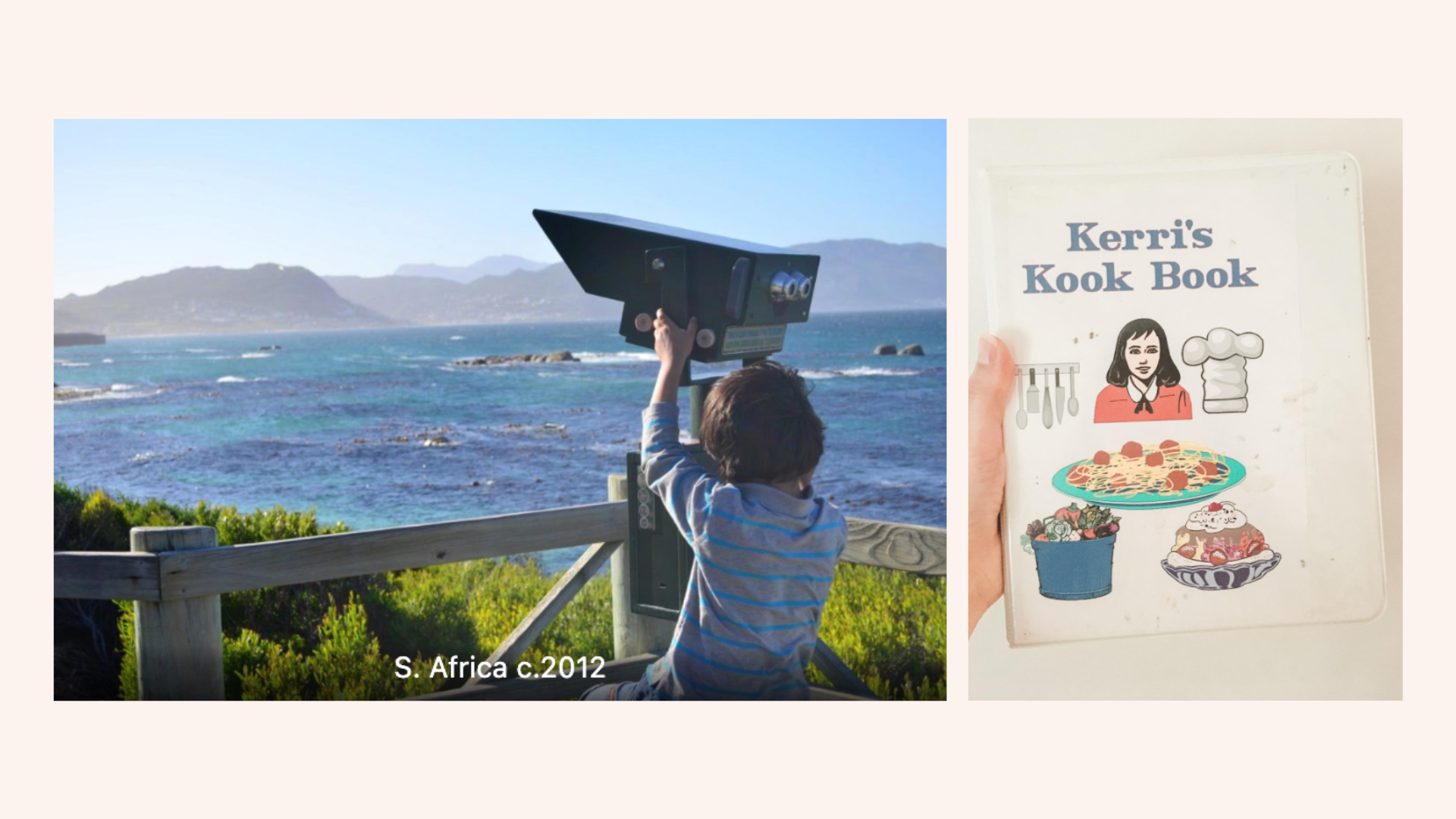Description: Get to know Kerri & Esther even better as they share their creative journeys from scrapbooking to picking up a first camera. Plus, hear our tips for staying creatively inspired, a fall tea favorite, and what playlists we can’t stop listening to.
SHOWNOTES
Yogi Throat Comfort tea
Spotify playlists – lofi hip hop, energetic lofi, lush lofi
Ira Glass on the creative process
Artists Way book
The Artisan Soul by Erwin McManus
Extra Bold Book
Esther – First Images of Photography
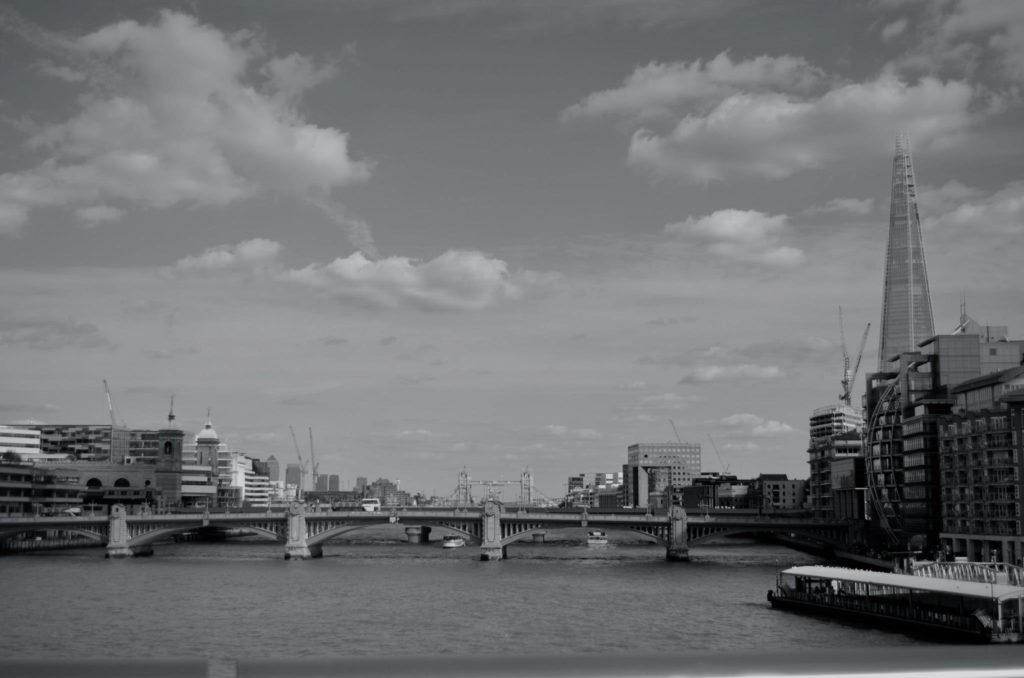
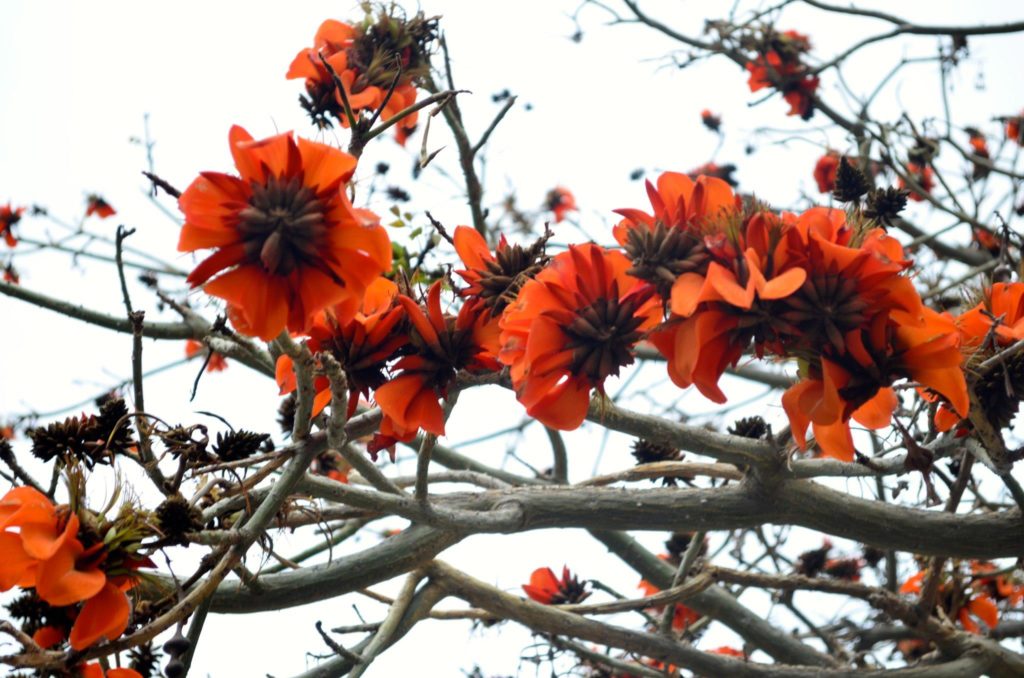
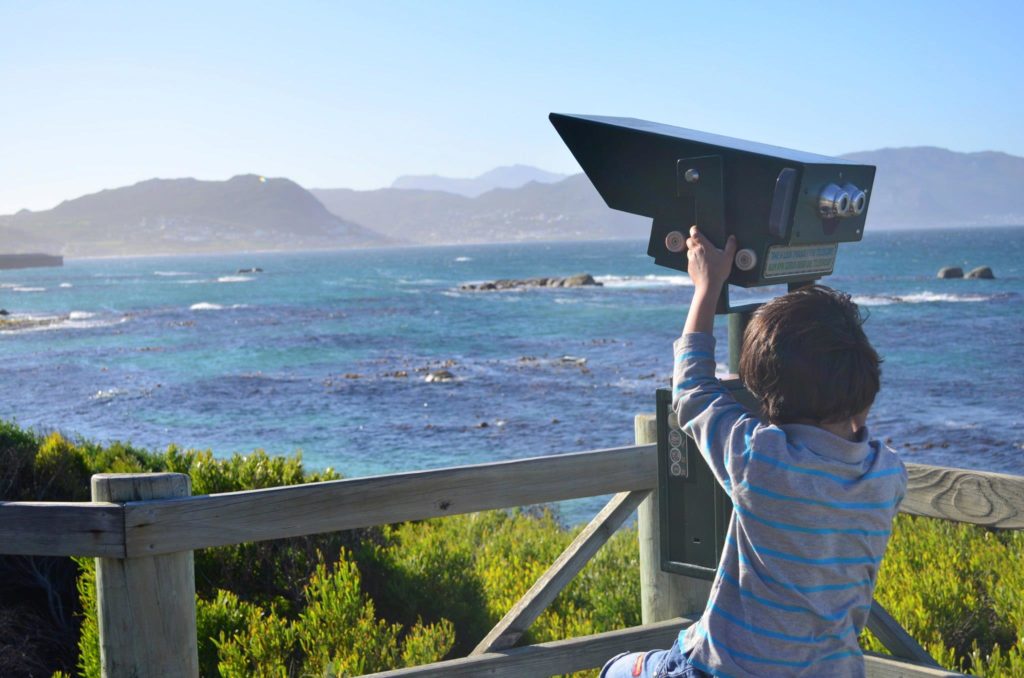
Kerri – First Images of Creativity
Esther’s current work
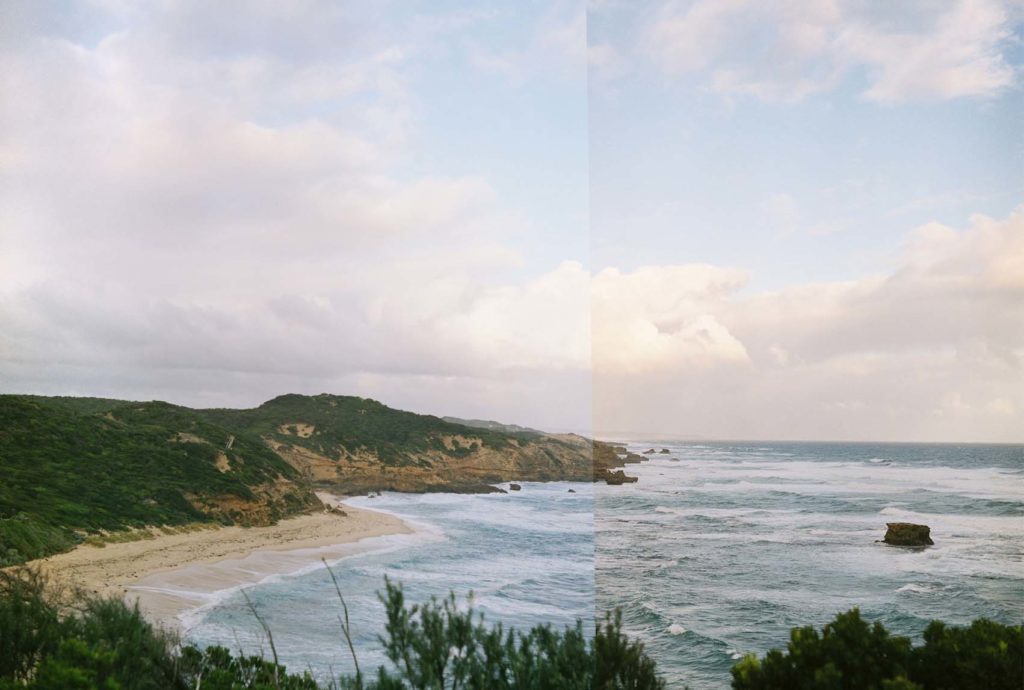
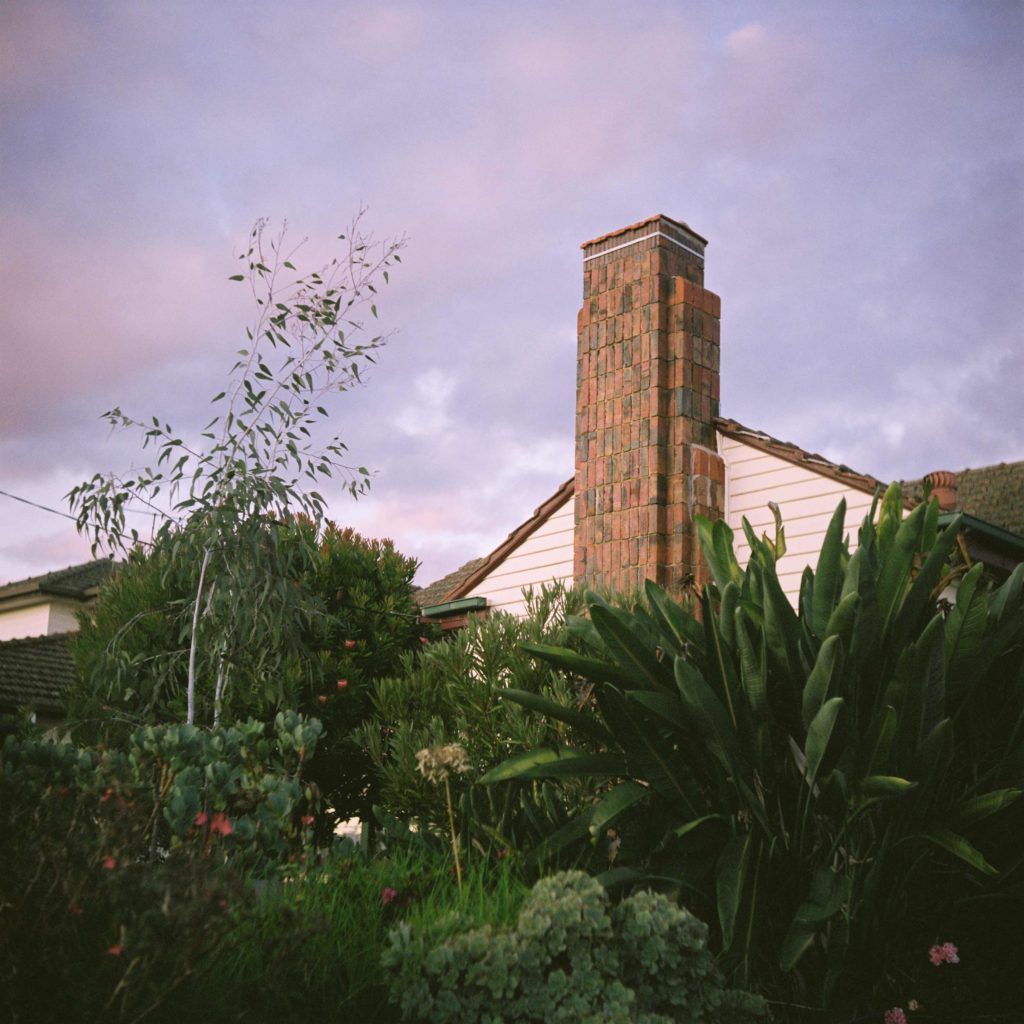
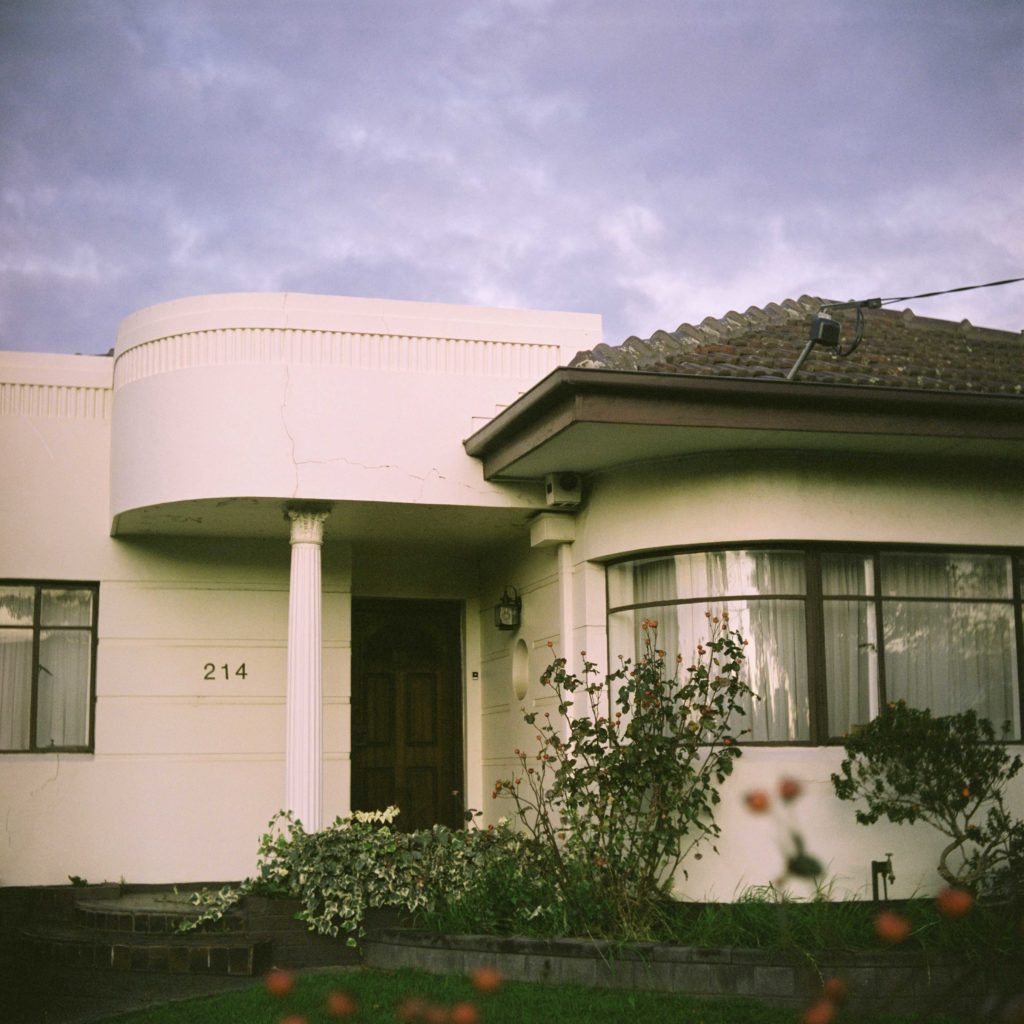
CONNECT WITH F&F
Subscribe to our podcast
Email us at hello@flourishcreative.co
Follow us on IG and tag us when you listen!
Listen + Leave a Review >>
TRANSCRIPT
INTRO
Kerri: Hi everyone, and welcome back to the Flourish and Friends podcast. I’m your host, Kerri, and I’m here with my friend and collaborator, Esther.
Esther: Hey friends.
Kerri: Our goal for this podcast is to create a new avenue for our Flourish community to gather around important combos that lead to more growth and more flourishing.
Esther: Yeah, nothing is really off the table because how we lead our life spills into how we lead at work, and overall, our brand reflects that, especially as creatives.
Kerri: Today we’re talking about our creative journeys and how to stay creatively inspired and stick around until the end to hear a couple of our favorite creative books. But first, let’s start with some fun things that have given us life.
FRESH PICKS
Esther: All right. So Kerri, what’s a fresh pick? What’s fuel you right now giving you life?
Kerri: Well, it’s fall, so you know that. Well, every season is tea season. We know this, but fall is an extra special tea season and I am really loving it. One of my favorite teas all year round, but especially in fall, is this Yogi Tea called Throat Comfort,
Esther: Mm.
Kerri: I discovered it from a friend and since then I have passed it on to I think all of our parents, and other friends as well. I feel like because of the name, you wouldn’t necessarily pick it off the shelf because you would think I need a sore throat in order to enjoy this tea. Here it is
Esther: Mm-hmm. Nice.
Kerri: but you don’t need a sore throat. It’s just a really yummy tea. It has notes of like, let’s see, it’s kinda like citrusy. It has some elm bark.
Its main ingredient is liquorice fruit, which would probably scare people away, cuz I know licorice is very divisive, but I would say this does not taste like liquorice to me. It just tastes really delicious. So I highly recommend Yogi Throat, comfort tea, and if you do happen to have a sore throat, you know, There you go. Catch two butterflies with one net.
Esther: I haven’t seen a throat tea with cinnamon before, cuz the one I usually drink is the traditional medicinal ones. And that’s like, It’s like the spearmint and something, I think echinacea.
Kerri: Yes. Yes. I’ve, I’ve had that one
Esther: that one sounds really good.
Kerri: It is, It’s really good. How about you? What’s your fresh pick for this week?
Esther: So my fresh pick is Lofi music.
Kerri: Yes!
Esther: I love Lofi because it’s upbeat. It’s really great to work to, but also, I have so much going on in my mind that sometimes I just need instrumental music without putting me to sleep. Which I love those too. I love instrumental music that’s super calm, like piano or jazz, that stuff too. But we’re talking Our creative journey today, and I think Lofi is just kind of underlined my journey. I probably discovered it in college and have loved listening to it. So anytime Spotify does a year in review, it’s a lot of instrumental music.
Kerri: So do you have a favorite, Lofi playlist?
Esther: Mm,
Kerri: on Spotify, cuz I know there are several.
Esther: there are several. I kind of switch between Lofi hip hop, and um,, right now I’m listening to Energetic Lofi. But yeah,
Kerri: Love
Esther: there’s so many different ones.
Kerri: I’ve been really digging lush lofi. I feel like that’s been a go to, but I switch which kind of between instrumental too. I can see what you mean though. Like sometimes it can be too calming. but yeah. Love it. Lofi beats. Well, maybe we can link some of our favorites in the show notes page.
Esther: Yeah. Let’s do it.
MAIN CONVERSATION
Kerri: All right. Now we’ll dive into our convo on creative journeys and creativity in general since this podcast is for, we kind of say brand creatives. You don’t have to have a brand and you don’t have to consider yourself to be creative to listen to this podcast, but. We thought we’d just share a little bit more about ourselves and our creative journeys, and then also how to stay creatively inspired.
Esther, I’d love to hear kind of your creative origin story, like have you always felt creative? What has creativity meant to you? Kind of through childhood?
Esther: When I think back to growing up, I definitely grew up in a creative home, my mom is the OG artist in our family. She wouldn’t consider herself an artist, but she used to play the guitar and sing and she also got really into photography. And when she was doing mission work in Mexico.
She bought a camera and took lots of photos there. I’ve started going through some of those slides, which was fun. and then if you look at our childhood photo albums, they’re just full of great photos of us, and so she really understood light. And right now her expression is definitely gardening.
I think there’s so many forms that creativity takes, but, yeah, I can think as early as pre-K and I’m sure if I had a better memory, um, I would say it was always there. But with my imaginative play, I mean, we didn’t grow up with very much so we had to use our imagination to come up with games.
I remember my sister having these plays and skits that we would all act out. There were six of us, so we had a full company, and we would put those on for the adults. And then, I mean, just whole worlds that we would create in our backyard or in the basement. I remember some really fun games that we came up with. and then just as I grew up experimenting, I remember taking lavender that my mom was growing and turning it into perfume. And my mom would always buy me random arts and crafts kits and encourage that with me. Jewelry making and beads. And there was one time she bought like crochet hook and um, that didn’t really stick, haha.
Yeah, it’s, it’s always been there. And then, I mean, through school you kind of get nurtured in your creativity or you deviate from it because I think obviously we’re all born creative. But then once we get into a school structure, we kind of are divided.
Into the creative group and the science, math and logic group, which I really felt like I, I split and I did both. but I did a lot of performance in school. All through middle school and high school, I was doing choir and different acting things but I never felt talented or gifted or anything.
Um, there’s always people that far excelled in those areas. And I wanted to try everything I was interested in, just like learning all these different things. And so, yeah, I wouldn’t have considered myself an artist at all growing up.
Kerri: I really like how you talked about the school structure. I haven’t thought about it that way before and it’s so true. But just like those, whether they’re explicit or implicit, ways of categorizing in terms of like the creative group or you know, more, more traditional creative group. cuz maybe the school had a specific outlet, maybe it was, it was choir or some other formalized “creativity” versus more of the like science, like you were saying, science, engineering, that side of things. I think schools nowadays are maybe more cognizant of that or maybe have different opportunities than when we were younger for nurturing creativity. Although there is still a huge emphasis on stem science, technology, engineering, and math,
Esther: Yeah.
Kerri: more so than the arts. So, there’s still room for growth, for sure.
Esther: Yeah. And I was always into academics as well, so it was really, Interesting, like graduating. I had just started getting into photography and I had this science background and so the only really straightforward path for me would be an architecture degree or something. I was kind of drawn to that, but I didn’t. To enter a field where I was working 60 plus hours in the office, and it just like the more I looked into architecture, the more grueling and unflattering or , Appealing it was. And so I just decided to go to art school instead and just, , trusted that the direction that the industries were going, that everyone was needing creatives in every field.
kind of had that foresight of like, well, if this is the direction, then I bet if I still did an art degree, I could find work.
Kerri: Absolutely.
Esther: How about you?
Kerri: I always felt, I always felt creative as a child. In the sense that I really liked to create, I always, I, my main thing growing up was dancing, so I was very musical, very movement oriented.
I always loved making up my own little dances and creating in that way. But I also did have a lot of access to arts and crafts. Kinda like you were talking about. My mom is also really creative. She. Draws and she’s just, she does a lot of different creative things. She makes up songs. She crochets and knits, so she does a lot of different things and she also, taught us, you know, to cook and bake as well.
So I think creativity was always there and was always present. And for me it really was something that I. I loved both the hands on process of making, in addition to once, I did have my very first little computer that didn’t even have access to the internet and was this old thing. I would always pull up Word documents or publishers and I started, I feel like at a young-ish age, Messing around with clip art and computer creativity too. So it was kind of a blend of those things. And in middle school or grade school, I can’t quite remember, we had an elective that was scrapbooking. So I took that elective and just really fell in love with it. Putting things together, the idea of, I’ve always loved documenting things, but also like arranging things and adding different stickers and figuring out what the layout was gonna be.
And it’s so interesting to think back, I was doing a lot of what I do now, but in a tangible way and telling a story or trying to create a scrapbook of a, of a trip we went. And yeah, I think for me it was always, since I was also pretty academically focused. I was always very school focused, always wanted to do well, like high, high achieving, high performing based on my own just personality and drive.
So I felt like in a way, creative. Space was really a release for me. Whether it was dancing or doing arts and crafts, dancing was a bit more community based, but arts and crafts for me was like really me and me by myself, Like getting time to refill or refuel or just do something with my hands that I really, really loved.
So yeah, I think that, that sense of. When you have the space, in school where you’re, so clear. It’s so clear, like what expectations are. Cuz you have to jump through all of these hoops, check all of these boxes, fill in all of these answers, and then you get a grade and then it’s like there is an end result.
part of me really likes that. But I think also the intriguing thing about being in a creative field and. Just doing creativity as a child was like the kind of limitless possibilities. It was a blank page. You could do whatever you wanted. So I really liked the balance of those things. Balance isn’t the right word, but I liked being able to kind of do both of those things as a kid.
Yeah. i wanna hear from you. I find it so interesting that you really liked science. going into photography, because I have always wanted to be good at photography, but especially with DSLRs, it is a sci Like to me it’s like photography is so much a science.
Esther: so much,
Kerri: A science in addition to being an art. So I find it so interesting that you were able to kind of integrate the two of those things through a medium that’s pretty technical, it’s both technical and.
Artistic at the same time. I’d love to hear more about that. So you went into art school. Did you know right away, like, okay, photography, Like that’s what I wanted to do? Or were you more open, tell me about like getting your first camera, Like what was that
Esther: Yeah. Yeah. I can think back to high school classes.
Our high school had a pretty good arts program. so I took ceramics, and then I took photography and remember my aunt giving me a film camera thinking that I would need it for, I think I might’ve needed it for one. Assignment or something like that. And she’s like, Oh, I have this old 35 mil Pentax camera.
And so I took that on. I used it for the assignment and then I just put it on a shelf for a very long time. but I had some friends also. We’re into photography and one of my friends that was a year ahead, she gave me her old point and shoot when she upgraded to a dslr. And so I just messed around with that, I’m sure for like at least two years, just doing point shoot stuff in my backyard or taking it around when we went places.
And then, I got a job and the first thing I bought was my dslr. And then the second thing was a laptop. So, I had a great opportunity when I graduated. to do a year at community college cuz I still wasn’t sure which path to take. But in that year I also took a trip to London and Cape Town and I took my DSLR and, And then I used those photos, to apply for art school, and. Like I said, I’m not the most talented person. But with photography I felt like it wasn’t, there wasn’t limitations on my hands
But, fast forward to art school. I was like, maybe graphic design, but, for the most part, photography was my path. And, art school Man, it, it really just blew open my mind of what art was and it taught me how to think, taught me how to think deeply and, I always credit my ideation, my brainstorming, abilities to art school because they really took the time, especially in that first foundation’s year, to push us to think deeper and think derivatively and, and not just accept the first idea that comes to our head and go with that, but to like write out 20, 30, 40 ideas and then, um, figure out.
Now the camera is like an extension of my hand. I think, like you said, I am more of an observer and I think more logically so I can understand photography. I think a bit more than the expressive nature of painting or, The other mediums. But yeah, I still like experimenting with other mediums even now.
yeah, photography has, has definitely been the, the best way for me to myself,
Kerri: you have a gift and you’ve done a lot to nurture it. It’s one thing to have talent, which you do, but to continue. Learning and honing your skill takes another level. And in today’s world where anyone can take a picture, everyone can take a picture and picture, Our world is so visual. I think it’s really cool that you have this gift that you’ve cultivated on a deeper level, not just technically, but like you were saying. Almost in inner work in a way too, with thinking more deeply about all the things that, that images are and, and what they do and what they tell, the stories they tell.
So I, photographers have so much power, so much power, and um, yeah, I just have major respect. Respect for you and for that skill that you have, the gift that you have.
Esther: Well, thank you. I think that there’s a lot of responsibility because I think something that I was learning about in art school was just the deceptive nature of photography as well. And that’s why my tagline is , honest photography.
Kerri: I love that.
Esther: I’m not trying to manipulate you or give you a false image of what you’re going to get, especially if it’s like me taking photos of products or food.
Like I want it to, I wanna capture what’s already there in the most honest and beautiful way. But yeah, I think there’s a lot of responsibility.
Kerri: Mm-hmm. I’m excited for a future episode. We’re gonna talk about photography, especially in the purpose driven space like missions and ethical photography and the responsibility of that. So to be continued. Yeah. We’ll continue diving into that.
Esther: What about you, Kerri? Like how did you decide to enter the non-profit space coming from that I, that space of like, you liked creativity, you liked academics, what, what brought you to that space?
Kerri: Yeah, I think it was a marriage of, of my passion for creativity strategy and then also, you know, social causes and trying to do good in this world. And I went to journalism school. I was on the more, we call it strategic communication or advertising side of the school. But what I think was really cool was when I realized, Oh, I can kind of blend all these things together and use it for a purpose and with purpose, and there’s so much need for better communications and better brands.
The nonprofit and mission driven space, there’s just a huge, huge need. There’s also a huge gap in terms of the research I did when I was in school in terms, in terms of conscious communications and understanding things like framing, um, and visual textual analysis. You know, why are we using the images were using during asks for money?
That sort of thing. There’s a long, long history of research around those things, so I think that part, the research that I was able to dive into, especially during my grad year learning and uncovering just. There’s a long history there and how oftentimes the research that’s out there still to this day doesn’t translate to the practitioners who are in this space.
So not only do we together get to create content and yeah, different designs to help. Break down those barriers or narratives. I’m also really passionate about equipping other people who are creatives or are brand leaders to pause and to do the research and to think about the messages they’re putting out into the world.
Cuz they’re important and there is a lot of power and responsibility there.
Esther: Mm-hmm.
Kerri: Again. Sure. We’ll talk more about that later, but I feel. That integration of all of those pieces was something that really excited me. And so I was able to do work in both the non-profit sector and in the agency space for mission organizations before I launched Flourish, where I get to bring it all together,
Esther: Mm-hmm.
Kerri: in, uh, I won’t say one package, but um, yeah, bring it to life in my own way now.
Esther: Mm-hmm. That’s awesome.
Kerri: I’d love to hear from you Kind of tips for staying creatively inspired.
Esther: So if you are listening and you feel. You’re on that threshold of maybe being creative and, , maybe you are in the creative marketing space and you are just, expected to crank out so much, like mind blowing content. I think that it starts with our mind, like I was talking, or in college, they really took time to develop our minds and our creative thinking.
So I think, even now when I apply, give myself time to think about. The content, the brand, who’s going to be viewing it. and then also like what’s been inspiring me lately, so put myself into it as well. So I think, like I was talking about earlier, divergent thinking is really just The tangents that these, this, mother idea I can call it produces. So, a lot of the time I’ll use Pinterest to create that mother idea and then not stay on Pinterest because that can be really stifling of my creativity. Using it as like, okay, I like this aspect. I like that aspect of that one.
I like the lighting in this one and how they use color in this one and how they use props in this one. So I like using those. Tangents on existing images, I think, are really helpful for me to stay creative, while also producing something that my client is expecting. I can’t just bring my full artistic self without them in mind because they’re gonna be like, What the heck is this? How am I supposed to use this?
I have to keep a straight angle on the product because that is what makes the product shine. Sometimes they’re just in the center. and that’s not the most creative place in the composition. Keeping the client in mind, I think is really helpful.
What about you? What, what do you think really plays into our creativity?
Kerri: Well, I think I forgot to put this disclaimer at the beginning of when we started this combo, but I, I really do feel we are all innately creative. I don’t want anyone to hear our conversation and think, Oh, I didn’t go to art school, or I didn’t go to journalism school. I don’t have formal training on creativity, so I, I can’t, not that I can’t be creative, but that those things are necessary to enter a creative field or that you can’t.
Incorporate creativity into whatever field you’re already in, cuz I definitely believe that you absolutely can. And the beautiful thing about the world nowadays is if you want to do something like what we do, whether it’s design or photography or brand strategy, there are so many ways that you can enter the creative field.
Esther: mm-hmm.
Kerri: and get the skills and tools you need through both training, but also through just creating like that’s the most that I feel like that’s the easiest. And The best way to nurture your creativity is just by doing it. Just keep creating, keep producing.
There’s a really famous Ira Glass speech where he talks about you, you know, at first you start, it sucks because you have taste, but you just have to keep going. You just have to keep creating and keep going, and that’s something that I think having that resilience to. Be creative and to be creative with both.
Not judging yourself, but also like critiquing yourself. It’s okay to have self critique cuz that’s how you get better and have constructive critique. But you also need the space to be able to create and just create for creation sake. So I think combining creativity into a purpose space is really.
What you were talking about with photography is you have to, you have to go through that strategy process of thinking through all the different levels. So the end creative product can be the best it can be for the client or for your brand, or for your audience ultimately, so they can connect with it.
And creativity is kind of a visceral thing. It’s. It’s hard to quantify, right? It’s about creating that spark or creating connection with your people and there’s so many different ways to do that and there’s so many opinions about how to do that. So I think that’s another thing. The ability to be resilient in creativity is to also be able to be open to feedback and to be willing to adapt and iterate, because the first idea isn’t always gonna be the best idea.
Like you were saying. Exactly like what you were saying with a mother and creating for me, like, you know, mind map or a sketch, like that’s helpful like continue, continue doing that and iterating.
Esther: I will add that we use creativity every day. We use our creative minds every day. And, I, I think about the most logical people, they’re using creativity in their problem solving. And I think at the most basic level as a human, our creativity is expressed through problem solving.
Kerri: Yes. So what are some ways that you stay creatively inspired? Maybe some top tips to share with our listeners or for you personally?
Esther: Well, some days are better than others. I would say on a bad day, I am comparing myself to everyone else’s work. So I think the first thing I do if I’m not feeling inspired is I need to stop looking at everyone else’s work,
Even if I love this person personally or look up to them, I need to just shut it off for a good few days, at least. And I think also looking at mediums that aren’t my own, can help spark this. Nice. Conversation one of my favorite mediums to look at is painting. and just especially because as in my studio practice, I do a lot of landscape.
And even just, like music, I think. Like I was talking about with Lofi, just having a music genre that can spark some thoughts and spark some energy. Those are really helpful to me. And then, I love listening to people’s stories and, through the podcast Medium, just people’s journeys are always so inspiring
And then, I would add that if I am having trouble with an idea, I’ll just walk away from a project for the rest of the day or a couple days. Sometimes we can try and pressure our brain to on this one thing, but it really needs these other thoughts to help converge all of, all of our, Thinking.
What about you? What, what keeps you creatively inspired?
Kerri: I resonate with all the things that you said. I think burnout, creative burnout is a very real thing, and
Esther: Hmm.
Kerri: when you’re creating or trying to be creative with what you do in your job, I think it’s really important to have that offline time. Time to just have no inputs because. If we don’t protect the time, then we’re just gonna be getting up first thing in the morning and just like input, input, input, and then it just goes on all day.
So having space to reenter and refuel is really important. There’s a book called The Artist’s Way that is really. Really good. It’s a whole program and it’s pretty intensive, but you can just take what works for you, leave what doesn’t. But one of the things she really talks about is this idea of morning pages and it’s the ability to basically just journal and brain dump in the morning and kind of clear the clutter.
Because in order to be creative, you can’t be thinking about things that’s on your life admin list or. Something that’s on your mind or on your heart, like you can really get out. So I think just that, that ability to have, have space, cuz you need space in order to be creative and have the self-awareness to know when to step away and when to say, Okay, this is, this isn’t working.
Like you said, we need to just, we need to just let this project down for the day. Yeah, inspiration everywhere. Obviously nature is a huge one. Being able to just get outdoors or get somewhere new too, I find if I’m not feeling inspired, sitting at my desk often, just changing where I am can sometimes spark ideas too, which can be really helpful.
And yeah, just like you said, looking at different fields. How can we remix? Sometimes the best innovations are really like remixing different concepts from different industries. So I think one of the famous examples is Apple Store concepts. They wanted it not to be just like any old text store, but they borrowed from the concept of a concierge at a hotel.
So how can we create it? For a tech experience, like you’re all it is, you’re shopping for a product that wasn’t glamorized in the past, but like reimagined it through a new lens and borrowed from kind of a different industry. And I think that’s really important. Like How can we do that in. The work we do or in the businesses that we’re, we have, how can we look to other ideas for inspiration to remix too.
So yeah. And then I agree completely with you, like the creative, the, there’s a fine line between that inspiration and comparison.
Esther: Yeah.
Kerri: knowing what that is for you and knowing what that is internally to know when to. to turn it off or move on to something else. Cuz no matter what your job is not creative things all day.
There are things that you can do that are still productive that probably need to get done if you’re not feeling super creative. And that’s the, this will be my last tip was, Finding what kind of, in your rhythm of the week or in your rhythm of the day, is there a time where you do feel most creative or free?
For me, I’m, I feel more creative in the afternoons cuz I feel really productive in the mornings. I like to knock things off my list, do emails, check some tasks off, do the things, kind of the concept of eat the frog, like get the hardest thing done out of the way. And then for me, design or.
Creating a campaign or whatever it is that’s in the afternoon for me, is a more optimal time. So finding your optimal time for creativity, and it’s not gonna be the same thing every day or every week, but you can help set yourself up for success in knowing what that is for you.
Esther: Fresh air. Fresh air is always helpful too.
Kerri: Definitely. Yeah. We’d love to hear listeners. We’d love to hear what things keep you creatively inspired because everyone’s inspiration is so unique and individual, and I always love hearing from other people. What brings you creative joy and what keeps your juices flowing?
So I think the overall encouragement is just inspiration really is everywhere. And if we can just look around and find the gold, see, see the new things in what’s around us, and change our, change our environments too. We can really find creative inspiration and be re-energized in whatever it is that we’re.
BOOKMARKS
Esther: Moving on to bookmarks. I would love to know what you are reading right now or what’s created some inspiration in your life, Kerri.
Kerri: My bookmark this week is a book called Extra Bold, A Feminist Inclusive, Anti-Racist, Non-Binary Field Guide for Graphic Designers. A very long subtitled name that’s right here, and it is kind of curated by 6 different designers and. It describes itself as part textbook, part Comic book, Zen Manifesto and Survival Guide.
Extra Bold is filled with stories and ideas that don’t show up in other career books and design overviews. So it is collaborative. Journey of essays on different topics.
For example, I’m flipping up on the page Disability theory. So this is, uh, an essay on disability theory. it’s just really, really cool, and I like how they kind of described it maybe as part comic too.
There’s some really cool ones. Illustrations in here that just talk through Yeah. those different elements of, of design . That doesn’t have as much of a spotlight on them. So I feel like I’m not doing it justice in this audio medium, but highly recommend the book. It’s something you don’t have to read, cover to cover.
You can just pick it up, read an essay, get inspired. By whoever the essay was or whoever the conversation was with. And I always take away something new, a new nugget for creative inspiration.
How about you? What is your bookmark?
Esther: So I chose The Artisan Soul by Erwin McManus. This is a book I read back in college, but it really shaped my view and my perspective that everyone is creative and they were designed to be creative. So he writes from a Christian perspective, Because he is a pastor. I think even if you’re not a Christian, it would be a really great read, just to see how through nature and how we then express creativity. Yeah, I think it’s a really great read and it’s really short and, yeah,
Kerri: I love it. I’m gonna add it to my list.
OUTRO
Kerri: Well, thanks for joining us today. Be sure to check out flourishcreative.co/podcast to see the show notes of some of the things we talked about today.
Esther: Yeah, we’d love to hear from you. You can send us a note to hello@flourishcreative.co or tag us on Instagram we are @flourishcreativeco. Lastly, you can leave us a review wherever you are listening and help new friends discover our podcast community.
Kerri: Thanks for tuning in. Until next time, live well and flourish.
